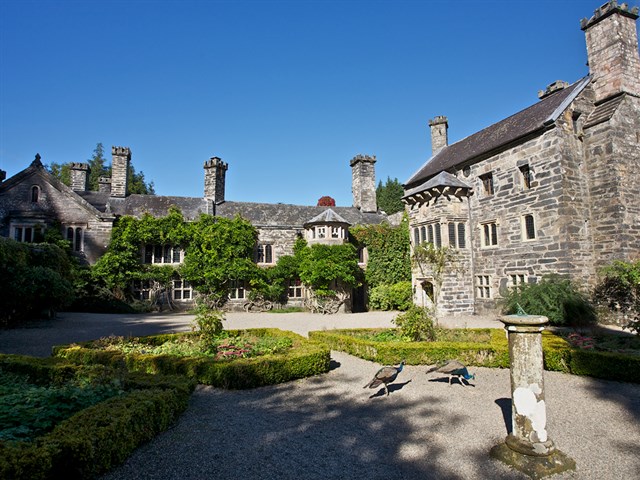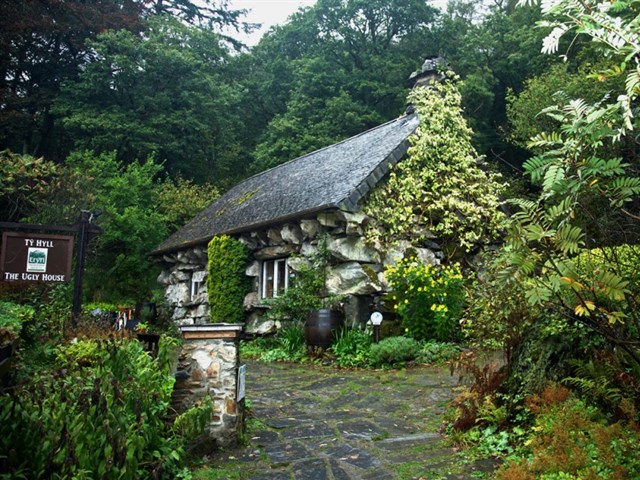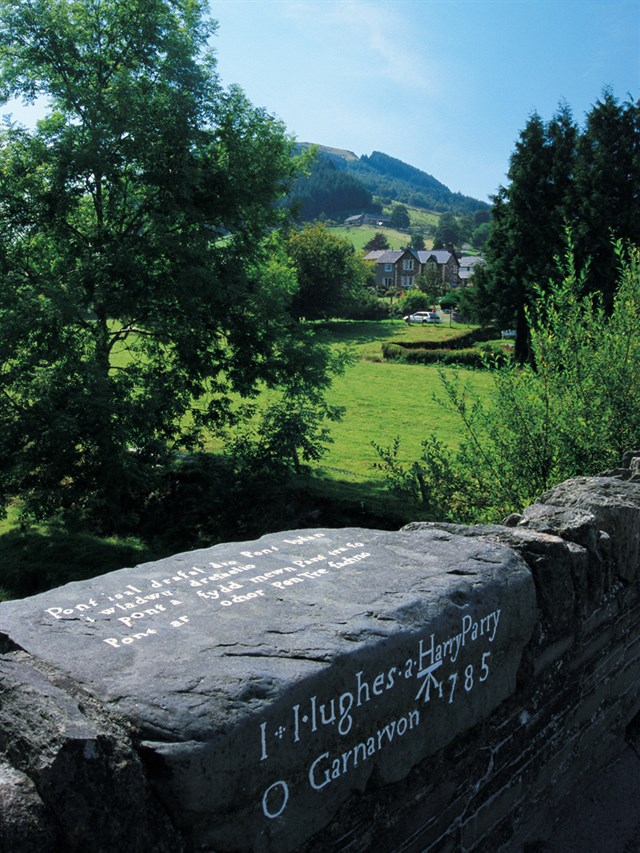Darllenwch yn Gymraeg
Follow our Heritage Trail...
Betws-y-Coed and its surrounding villages are steeped in fascinating history. Bernard Owen who has lived in Betws-y-Coed for many years has created a delightful local heritage trail to follow, easily accessible by car, bike or public transport.
“Our journey starts in Betws-y-Coed at the 14th Century Church of St.Michael’s, the oldest building in the village. Rebuilt and extended in 1843, it was still too small to cope with the influx of tourists in the 1870s and was replaced by the larger St Mary’s Church in the centre of the village. St.Michael’s contains the effigy of Gruffydd ap Dafydd Goch and to this day remains without electricity and uses candles for lighting.
Lets take a stroll over the railway line back towards the Waterloo Bridge at the junction of the A5 and A470. Designed by Thomas Telford in 1815 it was built to carry the A5 road across the River Conwy and through the village to Holyhead.
Now let’s walk back towards the centre of the village and stop at the Pont-y-Pair Bridge (Bridge of the Cauldron) built in 1468. A famous village landmark, here you can appreciate the rapids of the river Llugwy, pretty walks, rock hopping and late summer leaping Salmon too.
Now collect your mode of transport as we go over the Pont-y-Pair Bridge and take the B5106 to: The Gwydir Castle. Built in 1490 for the Wynn Family, this castle is an excellent example of Tudor Courtyard houses and one of the finest in Wales. It’s also reputed to be one of the most haunted houses in Wales so well worth a visit whether your interest is in history or the paranormal! The Gwydir Uchaf Chapel is situated in the woods opposite and was built by the Wynn family as the dower house to the Gwydir Castle in 1622. Here we can take a short amble along Lady Mary’s Walk in established mixed woodland and see Sir John Wynn’s Tudor bowling green.
Our journey continues along the B5106 to Trefriw, once a thriving port & resort and famous for its Victorian Spa and Woollen Mill. This working mill used to be powered by one of several water wheels built on the river and it still produces quality Welsh tweeds and tapestries. Here’s an opportunity for a paned (a cuppa) at the Café before we move to the Trefriw Spa. Visited by Victorians who would travel on paddle steamers up the River Conwy to Trefriw, the Spa contained iron rich waters which were considered to have many health benefits. (Not open to the public).
Next our history tour takes us back along the B1506 to Llanrwst. We go over the picturesque pack-horse bridge designed by Inigo Jones in 1636 and visit St Grwst’s Church dedicated to the 6th century Celtic Saint. The church has a stone built chapel adjacent, dating from 1633 which is home to Sarcophagus of Llywelyn the Great who died in 1240 after a reign spanning 4 decades.
Now let’s head back towards Betws-y-Coed on the A470 but take a left towards: Capel Garmon where we can find the major archaeological site of a Neolithic Burial Chamber built of the 3rd millennium BC. There are lovely views of the Carneddau Mountain Range and if you are visiting mid May listen out for the Cuckoo said to be heard every year at this time.
Let’s now head back to Betws-y-Coed and then follow the A5 south as far as the Conwy Falls Café. This building was designed by William Clough-Ellis who was responsible for the design of Portmeirion. Turn left here towards the quiet little village of Penmachno.
Located in the remote hills around the Gwydyr Forest between Penmachno and Betws-y-Coed you will find Ty Mawr, a 16th century farmhouse which is the birthplace of Bishop William Morgan who first translated the Bible into Welsh. The house holds an exhibition of ancient Bibles from all over the world and provides a glimpse of Rural Welsh Life in the 16-17th centuries.
We retrace our steps back onto the A5 towards Betws-y-Coed and turn left before the Waterloo Bridge following the signs to Blaenau Ffestiniog and stop in Dolwyddelan.
Here we head up to Dolwyddelan Castle and climb the steep hill for amazing views of the Lledr Valley and Snowdonia. Run by Cadw, the Castle is perched on a rocky ridge above the village and was built in 1210 by Prince Llywelyn the Great and was later captured by Edward I during his conquest of Wales.
Our local heritage trail would not be complete without a visit to the west side of Betws-y-Coed. Our tour now takes us back to the A5 and through Betws-y-Coed towards the village of Capel Curig. On the way we stop at Ty Hyll (Ugly House). This building is actually not ugly at all and it was alleged to have been built in a night (Ty-Un-Nos); a custom in the middle ages. Owned by the Snowdonia Society it is now a lovely tea room and beekeeping centre and offers the perfect excuse for another paned and slice of homemade Bara Brith.
Keep travelling along the A5 until you reach Capel Curig. This village has been recorded as the wettest place in the UK and the changeable weather doesn’t disappoint, creating a myriad of beautiful mountain scenes. Set in the foothills of Moel Siabod and with the river Llugwy flowing through it Capel Curig is popular for outdoor activities. Pop into St Julitta’s Church, the smallest of the old churches in Snowdonia. It was built probably around the late 15th or early 16th centuries and exhibitions are held here on a regular basis. (If the church is locked the key can be collected at the Pinnacles Cafe.)
As our tour concludes, head back to Betws-y-Coed where you can indulge in a well earned meal in one of our many pubs, bistros and restaurants and reflect on your day on the heritage trail.”
(My heritage trail is designed to be navigated by using the appropriate OS maps and guide books available at your accommodation or at the Tourist Information Centre.)
FURTHER INFORMATION - Princes of Gwynedd Exhibition; - Showing at Conwy, Betws-y-Coed and Caernarfon Tourist Information Centres.
Please click here for useful web addresses.
View of our photo gallery
-
 Gwydir Castle
Gwydir Castle
-
 Ty Hyll (Ugly House)
Ty Hyll (Ugly House)
-
 Bridge crossing the Afon Machno
Bridge crossing the Afon Machno